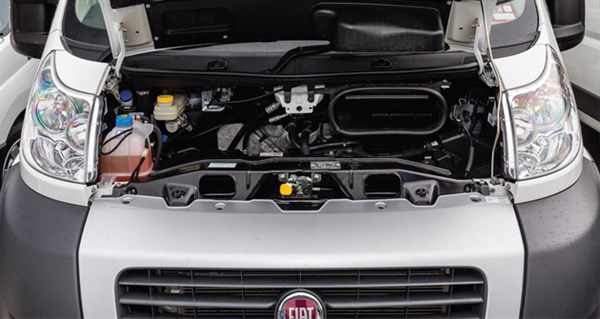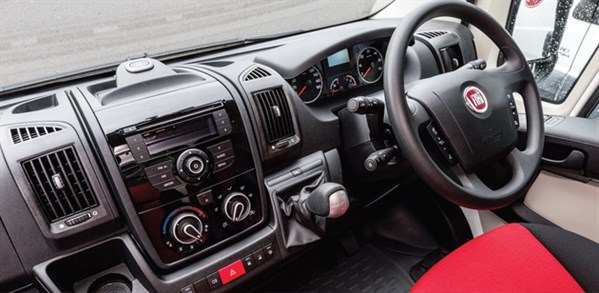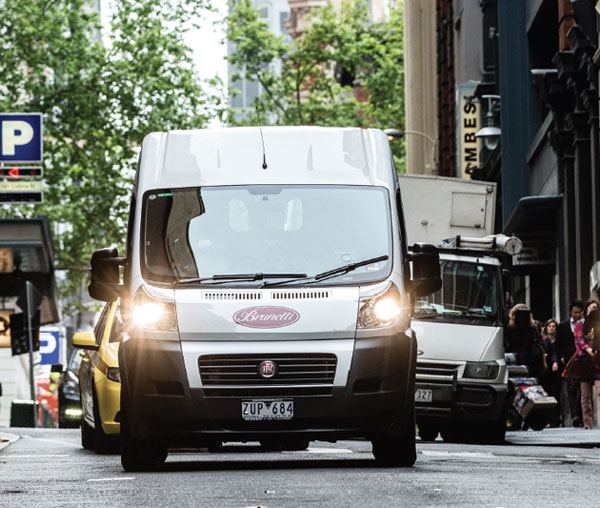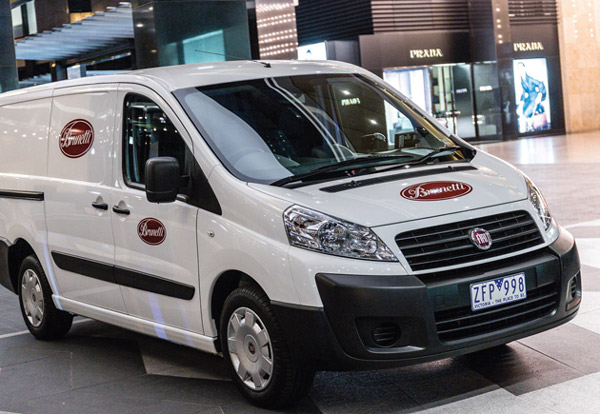The Fiat brand is no stranger to the Australian commercial vehicle market but is looking to make a bigger impression on the locals with the Ducato and Scudo
Fiat Chrysler is embarking on an aggressive push to carve out its own chunk of the Australian light commercial market with the Ducato and Scudo platforms.
Just in case you’re wondering the proper pronunciation of Ducato is ‘Dew-Kar-Tow’ and the Scudo is ‘Skew-Dough’. While the automotive side of the business has been having some success creating some brand identity, its light commercial vehicle (LCV) identity has to some extent been languishing.
The Ducato, in fact, is more often found with a mobile home on its back; according to Fiat, 45 to 50 per cent of motorhomes sold in Australia use the Ducato as a platform.
However, Fiat Professional Australia Director Rob Moorcroft makes no bones about his mission which is to grab market share from some of the big players in the LCV market.
Unfortunately for me, a part of discovering the best kept secret behind the vehicle involved getting up at 5am to deliver pastries for the Brunetti chain of cafes dotted around some of Melbourne’s more cosmopolitan haunts.
Engine
The Ducato uses Fiat’s 2.3-litre 4 cylinder turbo diesel MultiJet II engine for motivation and it’s available in a couple of different outputs. The MultiJet 130 puts out 96kW at 3,600rpm with 320Nm of torque at 1,800rpm, this powerplant uses a waste-gated turbocharger to handle forced induction duties.
The 130 is the engine of choice for the medium wheelbase Ducato models which cover load capacities ranging from 1,609kg in the low roof version to 2,009kg for the mid roof version. Load volume ranges from 10 cubic-metres to 13 cubic-metres in the long wheelbase Ducato.
Next step up the power chain is the 2.3-litre MultiJet 150, which puts out 109kW at 3,600rpm and develops 350Nm of torque at 1,500rpm.
The major difference between the two engines is the 150 uses a variable geometry turbo charger rather than the waste-gate turbo used on the 130 version. The 150 is found under the bonnet of the extra-long wheelbase version which can handle a payload of 1,914kg.
Transmission
The Fiat Scudo is available with a 6-speed manual transmission, while the Fiat Ducato comes with the choice of the same manual configuration or a 6-speed AMT option.

Cab and Controls
The interior of the Fiat is a big standout; it’s very Euro in layout, as you’d expect, with dark grey plastics, a large rotary dial in the centre of the dash to operate ventilation and climate control, and the flipup glove compartment has a chiller that will accommodate a 1.5-litre bottle.
On top of the dashboard is a large paper clip to help any pesky bits of important paperwork stay put during the working day.
The instrumentation has been recessed to the point where there is little in the way of glare to interfere with visibility at a glance.
There’s also document storage dotted all around the driver’s compartment and the all-important cup holders, while a steel bulkhead separates the cockpit from the cargo compartment.
Both the Ducato and Scudo come with standard seating for three, a two-seat option is available as well. Just to keep with the continental theme, the seat inserts are bright red. It made me feel a little bit sporty to tell the truth.
From the outside, the Ducato tries to stand out from the rest of the white-van crowd by wearing a kind of happy, bug-eyed look on its face. I guess this is from the ‘friendly’ school of vehicle design that has affected quite a few vehicles over recent years.
Conceptually, it doesn’t do a great deal for me, though it would make a good-looking ice cream van.
The smaller Scudo has more of a sense of commercial style in its outward appearance.
The not-so-good news from a handling standpoint is that the Ducato is front wheel drive, which does tend to affect its on-road characteristics.
Front-wheel drive vans tend to have a larger turning circle than their rear-wheel drive counterparts and don’t seem to have the same finesse on the open road, especially when running light or empty.
However, any traction issues that may be encountered are helped out by the electronic stability program (ESP) which has an anti-slip feature and load adaptive control (LAC) to keep the drive wheels driving in slippery conditions.
On the purely practical, plus side of the equation, the lack of a tailshaft and differential out back makes for a very low load height. It also makes it very handy for motorhome builders who can construct their motorhome body without having to work around a drive train.

Performance
To be honest, I was more than a little surprised at both the quietness and smoothness of the MultiJet engine.
There’s only really muted diesel chatter at idle or during acceleration under load. I’d put much of this down to the engine’s MultiJet fuel injection which uses small multiple injections of fuel into the combustion chamber during the ignition cycle giving the engine short sharp doses of fuel at high pressure.
The common-rail fuel injection system operates at 1,800 bar of pressure, to put that into a culturally suitable perspective an espresso machine uses around 9 bar of pressure to make the perfect coffee.
Manual transmissions are popular in continental Europe; Fiat also has an automated manual transmision (AMT) option for the Ducato.
However, the first van I drove for the day was the 6-speed manual which shifted nicely in the city traffic, as with many vans on the market today, the gear stick pokes out the dash panel nice and close to the steering wheel.
Later in the day I managed to get hold of an AMT-equipped version to get a comparison and I have to confess that it actually performed better than I was expecting it to. Some AMTs can be hard shifting and indecisive which tends to make them a compromise which generally tips me towards a manual transmission.
That said, the Fiat AMT performs better than some others on the market. The sloshing around of the water ballast used on the test vehicles was a good test of the AMT in start-stop traffic and it didn’t really get muddled during our drive.
But, there’s no substitute for a proper torque converter full automatic in terms of performance and driveability, especially in the kinds of roles that the Ducato is destined to fill. AMTs require a manual driving style that some won’t be overly happy to live with.
The AMT is a $2,900 option as well. I reckon I’d still lean towards the manual version on this one.
The smaller Scudo uses the 2-litre MultiJet 120 engine which puts out 88kW and makes 300Nm of torque. I only got to ride shotgun in the mid-sized Fiat but initial impressions were similar to the Ducato in terms of noise and performance.
The Scudo can handle a payload of up to 1,200kg and has a 6 cubic-metre load capacity and as with it big brother barn doors allow for forklift access. There’s enough space between the wheel-arches for an Aussie-sized pallet.
Verdict
Fiat Professional is really pushing both the Ducato and Scudo as a price competitive package of performance, value and capacity.
Both vehicles come with a 200,000km, three-year warranty and Ducato pricing starts at $36,690 excluding on-road costs, while the Scudo drives away for $32,000.
Until the end of 2013 Fiat Professional are also offering a five-year 300,000km warranty on Ducato as well as three years of free scheduled servicing.
It’s pretty clear that these guys aren’t mucking around in the jostle for market share.
It seems that there’s plenty more to come on the horizon for Fiat Professional as Moorcroft announced that the Doblo mini-van will be arriving in Australia next year to challenge Volkswagen’s grip on the small segment of the market. A 12-seater Ducato bus variant is also waiting in the wings.
As far as I’m concerned the more the merrier, it gives me even more names to mispronounce.
Specifications
Make/Model: Fiat Ducato
Engine: 2.3-litre MultiJet 130 and 150 4 cylinder turbo diesel engine with direct injection
Power/Torque: 96kW @ 3,600rpm/ 320Nm @ 1,800rpm (mid wheelbase to long wheelbase), 109kW @ 3,600rpm/ 350Nm @ 1,500rpm (extra-long wheelbase)
Transmission: 6-speed manual (6-speed AMT optional)
Drive: Front
Payload: 1,612kg to 2,009kg depending on variant
Cubic Capacity: 10 cubic-metres to 15 cubic-metres depending on variant
Make/Model: Fiat Scudo
Engine: 2.0 MultiJet 120 4 cylinder turbo diesel engine with direct injection
Power/Torque: 88kW @ 4,000rpm/ 300Nm @ 2,000rpm
Transmission: 6-speed manual
Drive: Front
Payload: 1,200kg
Cubic Capacity: 6 cubic-metres



